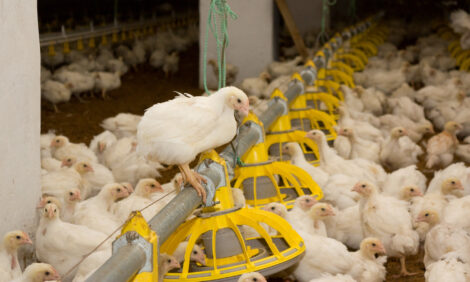



Analysis of Factors Important for the Occurrence of Campylobacter in Danish Broiler Flocks
Factors that were found in this Danish study to be positively associated with the occurrence of Campylobacter in the broiler flocks included old broiler houses, late introduction of whole wheat in the feed and poor biosecurity. Researchers proposed that the positive association with chimneys on the broiler house may be related to the increased presence of flies.For more than a decade human campylobacteriosis has been the leading zoonosis in many developed countries, and consumption of poultry or poultry products has been identified as the primary source of infection in humans, according to H.M. Sommer of the Technical University of Denmark and co-authors at the National Food Institute and Dianova Ltd.
In the journal, Preventative Veterinary Medicine, they report a study conducted to identify risk factors for the occurrence of Campylobacter in Danish broiler flocks. The study was based on a large data set consisting of Campylobacter positive status for nearly 6,000 broiler flocks and 43 explanatory variables.
Data were obtained from the Danish Campylobacter surveillance programme in poultry and from the responses to a standardised questionnaire answered via interviews with broiler farm owners.
A total of 240 broiler farms, comprising 539 broiler houses, were included in the study and their Campylobacter status was followed over a two-year period (1999 and 2000).
The large number of observations made it possible to carry out a multivariate analysis including all 43 variables. A multivariate analysis was conducted using a generalised linear model, and the correlations between the houses from the same farms were accounted for by adding a variance structure to the model.
The procedures for analyses included backward elimination, forward selection and expanding of the number of observations used in the variance analysis along with the reduction of the number of parameters in the model.
The unit of analysis was ‘broiler house’, meaning that all results from a broiler house were aggregated into one prevalence figure, i.e. number of positive flocks/total number of flocks delivered over the two-year period.
The following factors were found to be significantly associated with the occurrence of Campylobacter in the broiler flocks: old broiler houses, late introduction of whole wheat in the feed, relatively high broiler age at slaughter, poor rodent control, large number of chimneys on the broiler house, farm located in an area with a high density of cattle farms, having more than one broiler house on the farm and improper storage of wheat.
This large-scale study confirms several risk factors identified in previous studies, according to Sommer and co-authors. They suggest that the results concerning chimneys may be explained by the easier access that flies have to the broiler houses, which seems in agreement with recent Danish studies on the significance of fly-screens to reduce Campylobacter in broiler flocks.
The results of this study may be used in identification of effective interventions aimed at controlling Campylobacter in Danish broiler flocks, concluded the researchers.
Reference
Sommer H.M., O.E. Heuer, A.I.V. Sørensen and M. Madsen. 2013. Analysis of factors important for the occurrence of Campylobacter in Danish broiler flocks. Preventive Veterinary Medicine, 111 (1–2):100–111. dx.doi.org/10.1016/j.prevetmed.2013.04.004
July 2013








